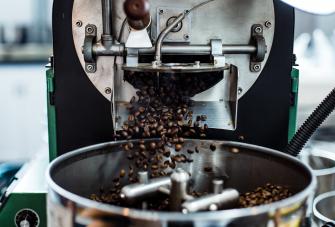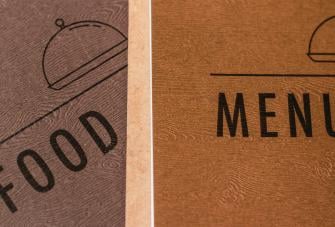Welcoming and Greeting Guests in a Restaurant: A How to Guide
It’s often said that first impressions are the last impressions. That’s why it’s vital to make sure that your establishment offers excellent customer service. Indeed, the provision of a warm welcome and ongoing attentiveness can be one of the things that sets you apart from the competition, ultimately helping to drive loyalty with customers.
The statistics show that after just one negative experience at a restaurant, 51% of customers will never do business with that company again. Just imagine choosing to dine at a fine dining restaurant and no one greets you or walks to your table, how would you feel about that experience?
That’s why when guests choose to dine at your restaurant the welcome is important. The way they receive this welcome will set the tone for the rest of the dining experience. Your host needs to make guests feel welcome in their initial interaction, and it needs to continue throughout the whole experience. The reputation of your venue could depend on it.
We’ve put together some tips to make sure you, and your staff, are welcoming and greeting guests in your restaurant in the best way possible.
Show a genuine interest
The host charged with greeting guests should always do so with a warm and welcoming attitude. Since this is the initial rapport with your customers, it’s crucial that it is done so in a genuine and polite manner.
Establish a standard type of greeting that your restaurant hosts can use, and make sure that they are asking about your customers’ needs, while expressing real concern for any special requests.
Hosts need to make guests feel comfortable, and also offer extra assistance to any disabled or elderly guests, like seating them closer to the doorways. And always remember to smile.
Strategically seat guests
To reduce frustration and wait times, pre-plan the seating arrangements ahead of time. This preparation will ensure that your guest’s reservations are all honored correctly and allow for better management of walk-ins at your restaurant.
Common sense is usually the best tool to help determine where to seat guests. Tables will need to be allocated according to the party size or the number of guests and the host will need to be strategic in placement of the tables.
Couples may prefer a corner or niche area to enjoy a more romantic experience; and larger, noisier parties would be better suited to private dining spaces or in the back to avoid other guests feeling discomfort. Some guests may request certain seating areas, and if the situation permits, it is always best to try to accommodate such requests. In fact, 65% of diners say that having their seating preferences satisfied makes them more likely to return.
Provide accurate wait times
To avoid impacting the customer's dining experience, it is important that the host provides true and accurate wait times. Most guests will be more accepting of a wait at a restaurant if they are pre-advised with an accurate forecast.
Although honesty with wait times can lead to a higher chance of guest abandonment, customers will certainly appreciate the information.
Keep calm and positive
The hospitality industry can be tough, but it’s important to remember that no matter what happens, hosts need to keep calm and be positive. A positive attitude will help improve even the worst situation.
Providing the best experience possible for guests is the most important factor. So, if the guest has a complaint about food or some other issue, handling it with a calm and positive attitude can make all the difference to the customer service experience.
Provide menus
It’s also best practice to provide guests with the drinks and food menus when seating them. This gives the customers time to look at the menu while waiting for the server to arrive and complete orders.
As an additional bonus, have your hosts take initial drinks orders, or at least bring water to the table for those thirsty diners. This can make customers feel extremely welcome and comfortable.
Act with kindness even when busy
One of the hardest elements to manage is responding promptly during busy times. Hosts and servers will be juggling many different tasks during busy periods. However, these are the times when it is most important to greet and respond to guests promptly.
Even though it’s hard to provide the same level of service compared to quiet times, it’s important to still take the time to greet and serve customers to that same standard.
When restaurants are busy, it’s also possible that customers have been a little neglected by servers. So if they flag you down, always acknowledge and respond with kindness and understanding.
Examples of what to say when greeting guests
Even though this task will generally be the job of the hosts, it’s also important that every employee is trained to greet guests as well.
Developing a general phrase that can be used as a standard welcome is ideal.
For example: “Good Morning/Afternoon/evening, welcome to XYZ (Restaurant Name)"
Ask about reservations and any special requirements
- Politely ask “Do you have any reservations?” to ensure you know whether to look for them or find a table
- If they do have a booking, follow up with “Can I please have your name?”
- After checking the reservation, repeat the details back to them “Absolutely (address by name if appropriate). You have a table booked for (Number of guests).
- If they don’t have a reservation, ask the diner “How many will be dining this evening?” and if you do have space ask if they have any preferences.
- With space established, ask about any special requirements. Is there a child in the group and will you be needing a high chair, are there strict dietary requirements?
Lead Guests to their table
When seating the guests, it’s important for the host to maintain eye contact, and continue smiling in the same friendly manner. To avoid any confusion, have the host lead the way to the table and be careful not to walk too fast.
Additionally, when you reach the table, check with the guests that this area is right for them, giving them the opportunity to confirm their expectations.
After seating the guests
Once the guests are seated, implement the above tips. Provide the guests with the menus and offer to take a drinks order.
Before the host leaves, ask if there is anything else they need and wish the guests a pleasant evening. At this point, a service staff member will take over and complete the next steps.
In Conclusion
It is always beneficial to be polite and courteous when greeting a guest at your restaurant. Proper training of all staff members on correct greeting practices will ensure there are no gaps in service and better maintain the level of service.




